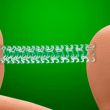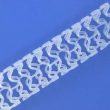3 Year Clinical Outcome Analysis and Failure Predictors in the Use of Intracoronary Brachytherapy for Drug-Eluting Stent Restenosis In-stent restenosis (ISR) has been one of the greatest obstacles standing in the way of long term patency in percutaneous coronary interventions. However, the use of drug eluting stents (DES) and their development has helped reduce ISR...
Is Using Drug-Eluting Balloons and Single Antiplatlelet Therapy Safe for Patients at High Risk for Bleeding Who Undergo Percutaneous Coronary Intervention?
The safety and efficacy of drug-coated balloons (DCB) has been established for the treatment of in-stent restenosis of conventional bare-metal stents (BMS) and drug-eluting stents (DES). Furthermore, these devices are also used to treat de novo coronary lesions, as demonstrated in the BASKET-SMALL 2—where DCBs were non-inferior to stents—and the DEBUT RCT trials—, where DCBs...
Left Main Coronary Artery PCI Using State-of-the-Art Zotarolimus-Eluting Stents
Percutaneous coronary intervention (PCI) to the left main coronary artery (LMCA) with drug-eluting stent implantation is currently a major challenge due to the size of the vessel, the compromise of a bifurcation lesion in important branches, and the potential risk of complications. Available information on LMCA PCI comes from studies where DES stents were implanted...
Clinical Results of IVUS-Guided Drug-Eluting Stent Implantation in Femoropopliteal Disease
Endovascular treatment of femoropopliteal lesions has become the first-line treatment due to the development of devices that decrease the restenosis rate. Recently, the IMPERIAL study showed greater patency at 1 year and greater freedom from clinically guided revascularization at 2 years in favor of the ELUVIA stent (paclitaxel-eluting fluoropolymer, FP-DES) compared with the ZILVER PTX...
Thin vs. Ultrathin Stents: 1-Year Clinical Results After IVUS/OCT-Guided Implantation
Second generation drug-eluting stents have lower frequency of thrombotic complications and in-stent restenosis. While clinical results have significantly improved, having a 2-3% annual rate of these complications within the first year after angioplasty is still worrisome. This resulted in the development of stents with struts <70 µm (ultrathin), with bioresorbable polymer and abluminal cover. Stents...
Should We Start Thinking Again About Bioresorbable Stents?
Coronary revascularization with drug-eluting stents (DES) is very frequent, especially in acute coronary syndromes, but these metallic stents are permanent foreign bodies that activate the entire inflammatory system. Using bioresorbable stents (BRS) emerged as an alternative to this challenge. Although the initial results of the ABSORB study were not as expected (probably due to a...
Drug Eluting Stents: Does Strut Size Matter?
The benefit of first-generation Drug-Eluting Stents (DES) over Bare Metal Stents (BMS) is largely known. Moreover, technological developments have led to reduced strut size, biodegradable polymers, and new scaffolds, which in turn have led to improved outcomes. These are known as ultrathin stents, and its struts measure between 70 and 100 microns, which contributes to...
Drug-Eluting Balloons Find Their Niche
According to this large European registry, drug-eluting balloons (DEBs) are competing with drug-eluting stents (DES) to treat in-stent restenosis. Drug-eluting balloons seem to work equally well for the treatment of long-term in-stent restenosis compared with new stent implantation (for the thin-strut DES registry). If DEBs can compete with DES—adding to the advantage of avoiding a...
Last Bastion of Bare Metal Stents Finally Falls
Multiple studies have shown the safety and efficacy of drug eluting stents (DES) in patients with high risk of bleeding. Only one last bastion of bare metal stents (BMS) was left standing: vein grafts. With controversial evidence and different physiopathology, many still argued against DES in saphenous vein grafts. This multicenter study randomized patients with...
Drug Coated Balloons vs. Drug Eluting Stents in Primary PCI
There might come the time when we are finally able to leave nothing behind, at least in the context of primary PCI. The REVELATION study, soon to be published in J Am Coll Cardiol Intv, has shown that paclitaxel coated balloons resulted non inferior to drug eluting stents (DES) in terms of FFR (fractional flow...








